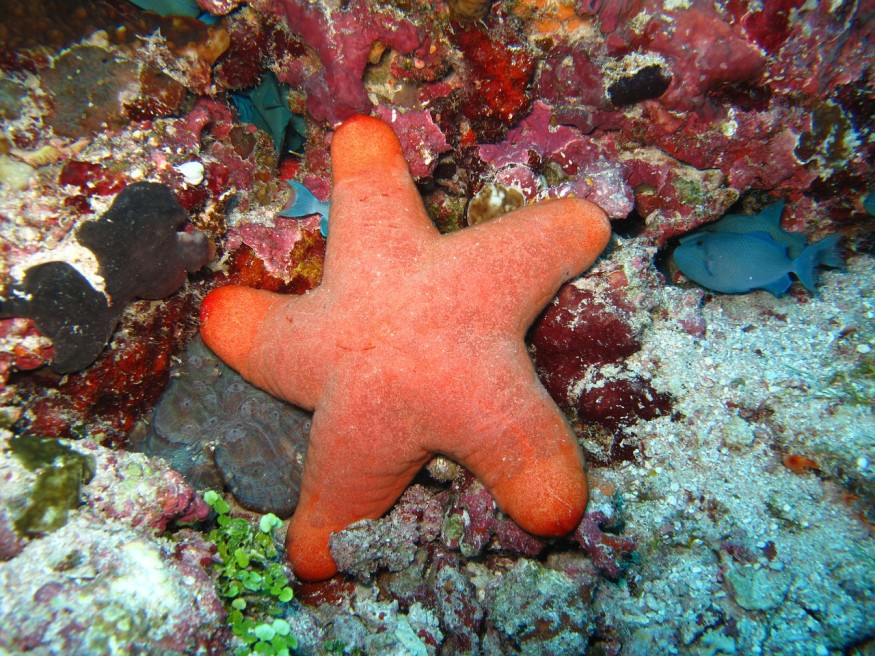Starfish or sea stars are some of the most unusual creatures in the animal kingdom because, despite their name, they are not fish since they are echinoderms similar to sea urchins and sea cucumbers, according to Woods Hole Oceanographic Institution (WHOI). Their skeletons are made of brittle, stonelike minerals and pebbly growths known as ossicles consisting of calcite.
This mineral is usually fragile and even more so when porous, similar to what is commonly seen in starfish. But researchers at Virginia Tech in Blacksburg said that the hole-riddled ossicles of the knobby starfish (Protoreaster nodosus) are strengthened by an unusual internal structure to compensate for the fragile composition of its bones.

Knobby Starfish Fortify Itself With Unique Bone Architecture
Materials scientist Ling Li and his team wrote in their study, titled "A Damage-Tolerant, Dual-Scale, Single-Crystalline Microlattice in the Knobby Starfish, Protoreaster nodosus" published in Science, that there are species of starfish that fortify themselves with unique architecture antics despite being made of brittle material.
Li said that they were amazed by their discovery as it looks like the internal bone structure of the starfish has been 3D-printed. Science News reported that the team used an electron microscope to zoom in the ossicles of the several dozen skeletons of knobby starfish at the scale of 50 micrometers or about half the size of the width of human hair.
This enabled them to see up close the seemingly featureless body of each ossicle that has a meshlike pattern the same as how carbon atoms are stacked or arranged in a diamond. However, researchers said that this diamondlike structure is not the only one giving the strength of the skeleton of the knobbly starfish.
They explained in their paper that within that diamondlike structure, the atoms that make up the calcite also resemble a series of stacked hexagons that affect its strength. The strength of a mineral is not the same in all directions. That means that pushing on calcite in some directions will likely break it. Meanwhile, the atomic pattern in ossicles and its diamondlike structure align to compensate for the intrinsic weakness of the calcite.
Despite finding this unique structure in starfish, researchers are unsure how animals make this diamondlike lattice. The team is studying the knobby starfish by surveying the chemical composition of the ossicles that led to its formation. They believe understanding how starfish build their ossicles will provide insights into creating porous materials, such as ceramics. Li noted that there is more to learn from creatures like starfish that may be regarded as primitive.
ALSO READ : Microscopic Robot Inspired From Starfish Larva Moves Around Using Tiny Hairs to Deliver Medicine to Cells
Anatomy of A Starfish
According to New World Encyclopedia, starfish are marine invertebrates that exhibit a radial symmetry as evident in their five or more arms that radiate from an indistinct disk and are usually covered by spikes. They have endoskeletons, although they mostly use a hydraulic water vascular system for support and locomotion. This system functions via its tube feet that are found on the ventral surface of the starfish's arm.
These sea creatures are an essential part of the marine food chain. They were eaten as larvae and became voracious predators during their adulthood, eating mollusks and other marine organisms. Also, their unique anatomy lets them avert their stomach to pull apart and digest their shelled prey.
Due to their extraordinaire structure, humans have found inspiration for aesthetic and mechanical use from observing how they move based on a hydraulics system and how they regenerate lost limbs.
Although they can reproduce sexually, starfish can also reproduce asexually. In cases when the starfish severed one of its legs, another starfish can regrow from it because it contains a portion of the central nerve ring. Fishers who tried getting rid of them by cutting their limbs just ended up multiplying the starfish's numbers.
RELATED ARTICLE: Juvenile Crown-of-Thorns Switch Diets to Enhance Growth Rates
Check out more news and information on Starfish in Science Times.












